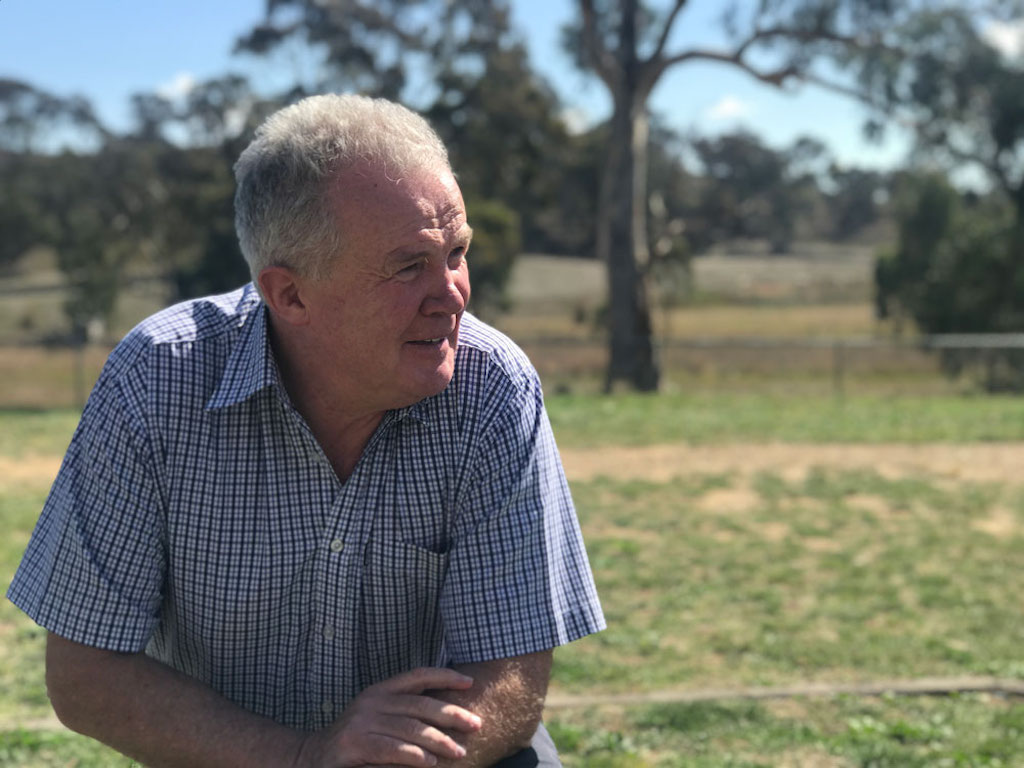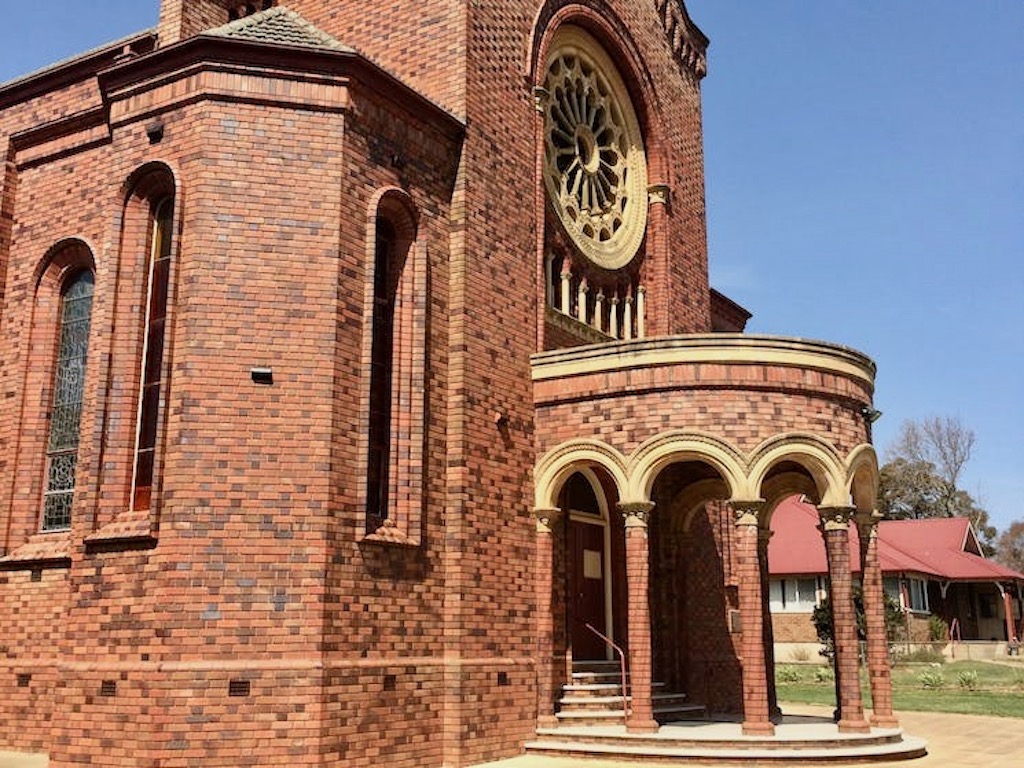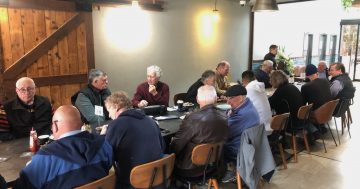
Now in Cooma, Father Mark Croker returned to Taralga in March last year to celebrate 25 years in the Catholic priesthood. The rare and unusual features of the church remind him of a community that nurtured his vocation. Photo: Chris Gordon.
On a warm summer evening 26 years ago, one of Taralga’s favourite sons, Mark Croker, was ordained a Catholic priest. Archbishop Francis Carroll and priests from throughout the Canberra Goulburn diocese gathered in the village’s church, which was packed with parishioners, including all of Mark’s family.
This is what Catholics in the village had envisioned in the 1930s during the Depression, when extraordinary generosity and fundraising amassed enough money to build the landmark Christ the King Church.
The sheer scale of the church is exceptional, probably because of the many Irish Catholics and the generosity of two sisters from Golspie. Another mystery is the church’s distinctive Romanesque style. It is unlike any other church in the surrounding towns and wider region.
Architecture aficionado and prolific Goulburn sketch artist Steve Ayling says most Catholic and Anglican churches were built in the neo-Gothic style, like the British Houses of Parliament.
“The British were using neo-classical Roman Empire-type architecture – like the Goulburn Court House and Post Office – and why is it that churches were in a neo-Gothic style? That is, copied from the 11th, 12th and 13th-century Gothic cathedrals.”
He said the reason came down to one man: English architect Augustus Pugin.
“Pugin argued that if you were going to design a church, it was unacceptable to design it in pagan architecture, as in the Romans were pagans,” Steve said.
“If you wanted to show your true beliefs, you would adopt the Gothic style. Now every other church, including Saints Peter and Paul’s Old Cathedral in Goulburn, are in neo-Gothic style, because of Pugin and his influence.
“The Romanesque churches were designed to show power, strength and importance to maintain the direction of the faith of the people, wherever they were.”
That design stands prominently in Taralga, visible well before people from Goulburn arrive at the village’s outskirts.
“Someone made a decision to say, ‘We don’t want an Augustus Pugin-inspired neo-Gothic church in this little town, we want a grand church’ and that’s what they built. Just amazing,” Steve said.
The uniquely twisted columns at the entrance replicate a style originating from Roman Emperor Constantine (AD 306 to 337), who brought them back from the Holy Lands.
“One of the stories is that the columns were from Jerusalem from King Solomon’s temple, hence the word Solomonic,” Steve said.
They were used in the original St Peter’s Basilica in Rome and the uniquely twisted style is evident in the second St Peter’s Basilica, which stands today.
Fr Croker still marvels at how such an architectural masterpiece, right down to the detail in the bricks, came about during the Depression. The unique cream-coloured marble from the Wombeyan Caves was a later addition.
“The way it fits into the architecture is something the people of Taralga, who put the impossible dream together, can be very proud of,” he said.

Twisted columns at the entrance of Taralga’s Christ the King Church announce the Romanesque style originating from Roman Emperor Constantine, who brought them back from the Holy Lands. Photo: John Thistleton.
That vision was helped by a large donation from Golspie sisters Margaret Lynch and Amy Costello. Nevertheless, more money was needed, so the parish staged dances, bazaars, card evenings, queen competitions, picnics, morning teas on the convent veranda, a Catholic ball, and Bachelors and Spinsters balls.
Since then, Taralga has produced three Catholic priests: Fr Frank Keogh, Fr Chris Kirwan and Fr Croker, who today is parish priest at Cooma.
“I always wanted to go back, that was where my vocation was nurtured and developed, by people in that Taralga community,” Fr Croker said, reflecting on his ordination.
At his ordination in 1997, a video of the ceremony captured by his friend Mike Keogh, who worked for Channel Nine and Foxtel, was relayed outside to the spill-over crowd of parishioners.
Celebrations in the village hall continued well into the early hours of the next day. The following day, parishioners and friends assembled at Taralga Showground around a tabletop truck where an altar had been assembled for another Mass. Farm animals and children were part of the celebration.
“The other churches were wonderful in the way they supported the Catholic community,” Fr Croker said.
“The old families are so well knit, there is not that bigotry, there’s a great respect for one another. They were always there to support one another in whatever they have done over the years.”








